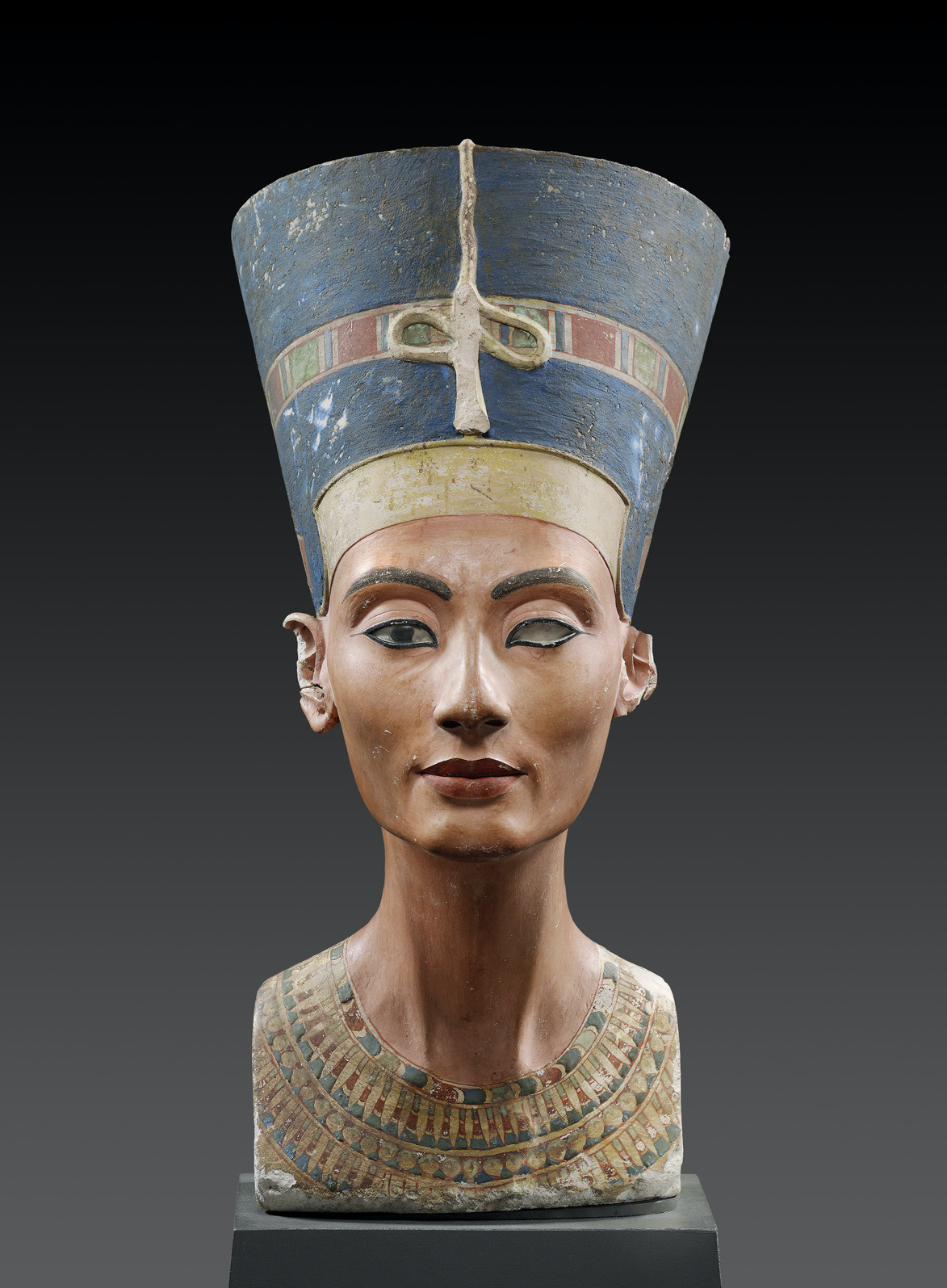The bust of Nefertiti is the Egyptian Museum’s most famous work. This sculpture was found in the artist Tuthmosis’ studio and its form shows it to be a typical sculptor’s model. Examinations by computed tomography (CT) scan have proved that the bust consists of a limestone core, onto which several layers of stucco were applied in the region of the shoulders and the crown. The fine modelling of the face and the precise portrayal of not only the individual wrinkles around the eyes and mouth but also the sinews of the neck were achieved by the application of a layer of plaster that is less than one millimeter thick in some places. The left eye socket is empty and shows the first phase of the insertion of the pupil, which can be seen in the right eye. The right eye is formed of black colored wax and crystallized quartz and with the addition of the painting the artist was able to glimpse a general impression of the finished work. It was planned to produce additional statues of the queen based on this model; Nefertiti, however, who was a queen of the 18th Dynasty of Ancient Egypt and the great royal wife of Pharaoh Akhenaten, disappeared from the political stage shortly after it was completed. Until this point in time she had been a party to all her husband’s political and religious decisions.
We present today's work thanks to the Neues Museum (part of Staatliche Museen zu Berlin) in Berlin.
P.S. Read the fascinating story of the mystery of Nefertiti's beauty!


 Unknown Artist
Unknown Artist